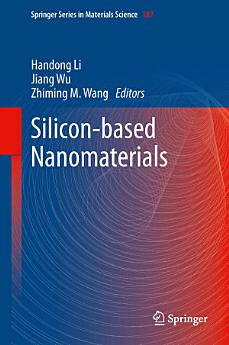Silicon-based Nanomaterials
Handong Li · Jiang Wu · Zhiming M. Wang
ต.ค. 2013 · Springer Series in Materials Science หนังสือเล่มที่ 187 · Springer Science & Business Media
eBook
409
หน้า
reportคะแนนและรีวิวไม่ได้รับการตรวจสอบยืนยัน ดูข้อมูลเพิ่มเติม
เกี่ยวกับ eBook เล่มนี้
A variety of nanomaterials have excellent optoelectronic and electronic properties for novel device applications. At the same time, and with advances in silicon integrated circuit (IC) techniques, compatible Si-based nanomaterials hold promise of applying the advantages of nanomaterials to the conventional IC industry. This book focuses not only on silicon nanomaterials, but also summarizes up-to-date developments in the integration of non-silicon nanomaterials on silicon. The book showcases the work of leading researchers from around the world who address such key questions as: Which silicon nanomaterials can give the desired optical, electrical, and structural properties, and how are they prepared? What nanomaterials can be integrated on to a silicon substrate and how is this accomplished? What Si-based nanomaterials may bring a breakthrough in this field? These questions address the practical issues associated with the development of nanomaterial-based devices in applications areas such as solar cells, luminous devices for optical communication (detectors, lasers), and high mobility transistors. Investigation of silicon-based nanostructures is of great importance to make full use of nanomaterials for device applications. Readers will receive a comprehensive view of Si-based nanomaterials, which will hopefully stimulate interest in developing novel nanostructures or techniques to satisfy the requirements of high performance device applications. The goal is to make nanomaterials the main constituents of the high performance devices of the future.
ให้คะแนน eBook นี้
แสดงความเห็นของคุณให้เรารับรู้
ข้อมูลในการอ่าน
สมาร์ทโฟนและแท็บเล็ต
ติดตั้งแอป Google Play Books สำหรับ Android และ iPad/iPhone แอปจะซิงค์โดยอัตโนมัติกับบัญชีของคุณ และช่วยให้คุณอ่านแบบออนไลน์หรือออฟไลน์ได้ทุกที่
แล็ปท็อปและคอมพิวเตอร์
คุณฟังหนังสือเสียงที่ซื้อจาก Google Play โดยใช้เว็บเบราว์เซอร์ในคอมพิวเตอร์ได้
eReader และอุปกรณ์อื่นๆ
หากต้องการอ่านบนอุปกรณ์ e-ink เช่น Kobo eReader คุณจะต้องดาวน์โหลดและโอนไฟล์ไปยังอุปกรณ์ของคุณ โปรดทำตามวิธีการอย่างละเอียดในศูนย์ช่วยเหลือเพื่อโอนไฟล์ไปยัง eReader ที่รองรับ








